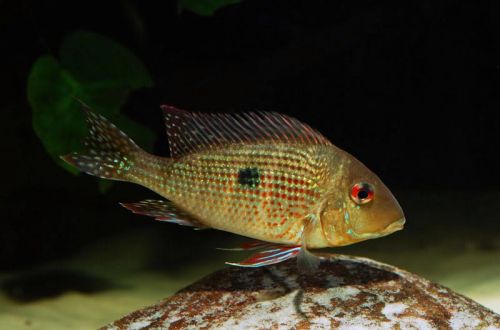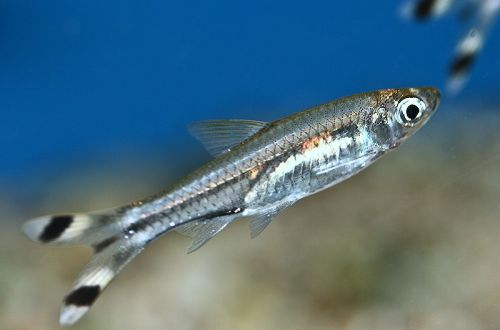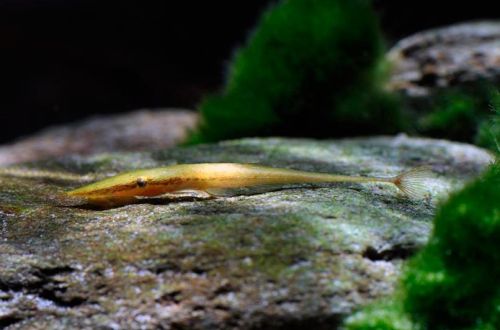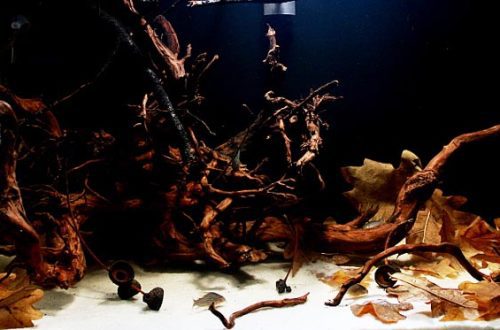
Geophagus Brokopondo
Geophagus Brokopondo, scientific name Geophagus brokopondo, belongs to the Cichlidae family. A rare fish in the aquarium trade, it often goes on sale along with a batch of other Geophagus. Easy to keep if getting a big aquarium is not a problem. Perfectly compatible with other fish.

Contents
Habitat
It comes from South America from the Suriname River basin, which flows through the territory of the state of the same name, and a large artificial lake – the Brokopondo reservoir, formed in the 1960s after the construction of a dam. Inhabits regions with sandy substrates along the coastline and in the shallows near the islands. The natural habitat is changeable. During the rainy season, the water level can rise by several meters, and its chemical composition of water also changes.
Brief information:
- The volume of the aquarium – from 500 liters.
- Temperature – 25-33°C
- Value pH — 5.0–7.0
- Water hardness – 1–10 dGH
- Substrate type – sandy
- Lighting – subdued
- Brackish water – no
- Water movement is weak
- The size of the fish is up to 15 cm.
- Food – any sinking food
- Temperament – peaceful
- Content in a group of at least 5–8 individuals
Description

Adult individuals reach a length of up to 15 cm. Sexual dimorphism is weakly expressed, males and females are practically indistinguishable outwardly. Fish have a massive body with a large head. At a young age, the color is gray, with age it becomes golden. Depending on the lighting and the angle of incidence of light, red stripes appear on the body, consisting of small specks. Fins and tail are red or burgundy with blue spots.
Food
They feed in the bottom layer. Geophaguses pick up a portion of sand with their mouths and sift it through the gills in search of small invertebrates and pieces of vegetation, algae. In view of this way of eating in the aquarium, sandy soil should be provided and sinking food should be used. For example, dry flakes, granules combined with frozen brine shrimp, daphnia, bloodworm pieces.
Maintenance and care, arrangement of the aquarium
The optimal size of an aquarium for a flock of 5-8 fish starts from 500 liters. The layout is arbitrary. The only important thing is the substrate. As noted above, it is necessary to use sandy soil. If breeding is planned, it is advisable to provide several flat large stones that can become a spawning site.
Brokopondo geophaguses are able to adapt to a relatively wide range of conditions, but at the same time, sharp fluctuations in temperature and pH and dGH parameters should not be allowed, and the accumulation of dangerous concentrations of nitrogen cycle products (ammonia, nitrites, nitrates) should also be avoided, which is especially important in the absence of living plants . To ensure stable water conditions, the aquarium is equipped with the necessary equipment and regular maintenance is carried out: weekly replacement of part of the water with fresh water, removal of organic waste (food leftovers, excrement), etc.
When choosing a filtration system, it should be borne in mind that during feeding, the fish create clouds of suspension that can clog the filter, so not every model may be applicable. In this case, it is worth consulting with specialists.
Behavior and Compatibility
Peaceful in relation to other species, compatible with many non-aggressive fish of comparable and smaller size. It is recommended to maintain a flock size of at least 5–8 individuals. With fewer numbers, weaker fish may be attacked by dominant relatives.
Breeding / breeding
Depending on the conditions, the fish choose one of two strategies for reproduction and protection of offspring. The first is that during spawning, the fertilized eggs remain on some surface, for example, a stone, and the parents are in close proximity to the masonry to protect them. In the second case, the female collects fertilized eggs in her mouth, where they are for the entire incubation period.
At the time of writing, no successful cases of breeding Geophagus Brokopondo have been recorded. First of all, the lack of information is due to the low prevalence of this species in the aquarium trade.
Fish diseases
The main cause of diseases lies in the conditions of detention, if they go beyond the permissible range, then immunity suppression inevitably occurs and the fish becomes susceptible to various infections that are inevitably present in the environment. If the first suspicions arise that the fish is sick, the first step is to check the water parameters and the presence of dangerous concentrations of nitrogen cycle products. Restoration of normal/suitable conditions often promotes healing. However, in some cases, medical treatment is indispensable. Read more about symptoms and treatments in the Aquarium Fish Diseases section.





